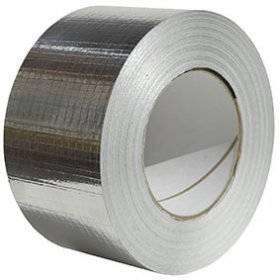Wrong. You can’t scale logs much. logs are 16 MJ/kg
Copy pasta without source. Book! https://xkcd.com/1162/
I love book.
which is bigger? TREE(3) vs
((…(1 room of stacked papers ) room of paper) room of paper)…)) room of paper
The number of brackets in above expression is, eh, ok, you got the idea.
/s
*Boo
(But having a book instead is always nice.)
I choose to believe it was meant as a warning, because GP is going to yeet a book at your head. But with a fair warning.
Maybe it’s like a yellow card and they’ve been booked.
I always use “book” as an insult. Especially since my phone autocorrect was updated…
Log scales are great but cannot be understood by the vast majority of people. They simply aren’t taught to a level of comprehension.
Bah, that graph needs antimatter.
Is there enough paper on earth?
Antimatter doesn’t really do anything by it’s own, but if we let 1 kg react with 1 kg of matter (non-anti-matter), we get E = mc2 with m = 2 kg. So 1.8 * 1017 J, or 1.8 * 1011 MJ. If we assume that 10 MJ/kg is represented by about 1 cm, the bar would have to be 1.8 * 1010 cm or about 1.8 * 108 m. A standard A4 piece of paper is about 30 cm tall, so 6.0 * 108 A4 papers are needed. I.e. 600 million papers.
So we definitely have enough paper, but it would be a very tall stack.
That’s only about 180,000km (~112,000 miles) or just under half way to the moon.
Also some quick googling says an average desktop printer can print about 30,000 pages per month, so it would take 20,000 months (~1670 years) to print that out. And a typical toner cartridge can print 3,000 pages and costs $80, so it would take 200,000 toner cartridges and cost $16 million.
Now, those aren’t based on any specific model, just the first result in Google haha
deleted by creator
now add cost
I wonder what was the cost of making gasoline cheap. Probably like $10 huh.
millions dead
thats one kind of cost
Okay but since you’re the one trying to make a point by saying that, it’s really up to you to add the cost and show that the results really do make the point you want to make.
its a post about uranium being at the top, so the message should be about primary energy generation (unlike sugar -nutritional energy, which is also in the pic)
Cost per gigawatt of installed capacity: Nuclear power: 7–10 billion euros per GW.
While Wind energy (onshore): 1–2 billion euros per GW. Wind energy (offshore): 2–4 billion euros per GW. Solar energy: 500 million to 1 billion euros per GW.This is evident if you just look at the nuclear power companies like france (who is heavily into nuclear): State-owned EDF - 70 billion euro debt. These companies can’t stay afloat because its that unlucrative and therefore need heavy subsidies.
Then you have environmental cost, which is the funny part, because we cant even evaluate the potential of the damage since we dont understand the effects fully. The scale in the cartoon is literally comedic compared to the half-life of nuclear waste. like 24000 years for plutonium and for uranium over billions
It’s a post about logarithmic scales LOL.
which by adding cost a linear scale would maybe make it fit
It’s also a post saying that there’s a point to be made using the lack of a logarithmic scale, which is what this guy’s pushing against.
If we could consume uranium, you could have a teaspoon’s worth and be done with eating for the rest of your life.
I have a uranium rock which I could conceivably swallow - probably closer to a tablespoon than a teaspoon. I don’t think any process in my body could extract energy from it.
Alpha radiation is not too bad. Unshielded helium particles. Like I tell anyone I show my rock too - as long as you don’t eat it, this is safe. (I am a mad scientist who has exposed hundreds if not thousands of children to uranium lol)
Really, if you could extract the energy from the nucleus of a hydrogen atom, you’d never have to eat again. But also because that’s too much energy for you and you would be dead.
I think that’s technically true regardless.
I wonder if that’s actually factual or not. Uranium by itself isn’t too terribly dangerous. It’s the whole fission byproducts thing that’s the buzz kill.
You would get heavy metal poisoning, same as if you ate a chunk of lead
Interestingly, no. It’s not the same as if you ate a chunk of lead.
Lead binds to calcium channels, and then blocks them. This makes it a bit of a neurotoxin. It also accumulates in the bones.
Uranium on the other hand is one of the heavy metals that the body is good a filtering out of the blood. The body is not as good at expelling the uranium. It accumulates in the kidney. This can lead to kidney disease, and other related issues. And that’s just the chemical toxicity of Uranium. Add in the radioactive side of things, and you have a truly distinct form of metal poisoning.

Also it depends on the isotope of uranium. Something you could find naturally isn’t too dangerous, but something enriched too be used as fuel or for wepons is significantly more radioactive.
Radioactivity inside your body is very bad bad
AM or FM?
5G
Lies that Big Non-Irradiated food is trying to spread. Uranium is actually nummy. Why do you think it’s called “Yellow Cake” anyway?
Wonder what that would look like the even more extreme case of matter-anti-matter?
By the way, energy density is exactly what you look for in bombs. It says nothing about energy prices per joule. It’s also great for nuclear submarines or nuclear powered aircraft carriers. So war, basically. Light from the sun has a pretty low energy density, yet powers live on earth.
The energy density of light from the sun is pretty insane. You can power a lot with 1kg of light
Yep, radiation pressure. Which is a limiting factor for star size too: too big and the radiation pressure gets stronger than the gravity, blows them appart.
Incorrect, if you aren’t a bitch about it. Fuse that gasoline!
If we’re counting future technology, my money are on iron man style reactor. Don’t need to fuze shit, infinite energy.
Except the Ironman style reactor is pure science fiction, whereas hydrogen fusion is real, but still has issues of energy capture, which several groups are working on.
There are two promising avenues, one is a direct physical capture, as in fusion is initiated with huge pistons that are physically moved by the fusion explosion,
And the other cool one is direct magnetic coupling.
I expect both to take off long before the tokamak style does.
But fission power is already here, and much easier to set up. Molten Salt Thorium is also promising. And once some corrosion issues are solved, could power the earth at current levels for the next thousand years.
All while producing an isotope of actinium that produces only alpha radiation. Which is super useful in killing cancer cells.
Well, they suggested fuzing gazoline, not me.
But fission power is already here
Asterisk. A big one. There is no real life prototypes of energy-positive reactors yet. There are several promising pre-prototypes that are almost ready, just need to fix some engineering issues. And it would not be a problem if the whole field wasn’t in this state since the sixtieth.
Fission. As in uranium and Thorium.
We’ve had energy positive fission since the 1950s.
I was thinking the same thing. It’s unfair compare chemical energy to nuclear energy. Coal still kind of sucks, but the hydrogen in the others could definitely be used in fusion…
Coal still has carbon in it. Carbon does have a lot of excess energy per nucleus. Just gotta turn it into iron.
That’s true, but there is far more energy to gain by fusing hydrogen compared to carbon. I’m not sure how it compares to uranium though. I suspect it might be similar. (I mean, obviously in practice you wouldn’t / couldn’t actually get the energy from fusing carbon - but we can still compare hypothetically. … also, I’m sure we could get a clear answer by looking it up; but this is one of those things where thinking about it is probably more interesting than knowing the answer.)
Carbon and uranium are pretty comparable. Look up binding energy per nucleon.
It is perfectly fair in the context of “fuel”, a resource used to produce energy. Whether energy is generated via chemical or nuclear reaction is irrelavent in this case.
Yup. If, for example, you’re designing a deep space mission, where every gram counts, there’s a conversation to be had about whether it’s cost effective (and appropriate risk) to send nuclear reactors and fuel aboard those spacecraft.
Or using modern engineering, whether an aircraft carrier should be powered by nuclear fission or internal combustion of hydrocarbons.
Usually space craft have relatively light power needs so why bother with a whole-ass nuclear reactor when an RTG is smaller, lighter, and has no moving parts? They’re a pretty common choice for space probes, for example.
We’re actually running into shortages of Plutonium 238. Which is seriously compromising deep space missions.
In recent developments, 10% of the US GDP is now allocated to producing Astronomy and Astrophysics plots. More news at 9.
deleted by creator
Yes boss, I did work out the dynamic range of that log amplifier we wanted to use in our next product’s sensor PCB, it’s 80dB.
The results are over here. (points to a roll of A-4 paper)
It has 40 data points and only took me 1 week, 10 pencils, and 20 erasers to plot the chart. Yeah I can present it, it’ll take me 10 minutes to roll it out, pin it down, and fetch the A-frame ladder.
This is the real big brain hack with decibels — you can use a linear scale, it’s just that the units are logarithmic instead.
(Yes I know most people would call a dB axis logarithmic, it’s just a silly comment.)
You call this a linear holograph of a non linear phenomenon and earn yourself that promotion.
would burning fat be carbon neutral?
In the same way biofuels are: Technically yes, but still not that great of an idea outside special applications. (One I could imagine would be someone wanting to live completely off grid using filtered frying oil in an old-but-ridiculously-sturdy diesel generator)
log to the base 76000000
Jerry Hathaway still wants 5 megawatts by mid-May.
You win the Internet today!!!
Holy crap, my only ambition was lovely parting gifts!















